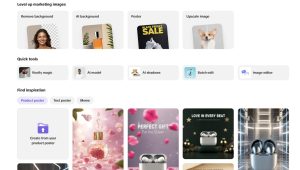Brand guidelines are an essential component of any successful brand identity. They serve as a set of rules that govern the composition, design, and general look-and-feel of a company’s branding. Essentially, brand guidelines dictate the content of a logo, website, advertisement, and similar marketing collateral.
The purpose of brand guidelines is to ensure that a brand is represented consistently across all mediums. This consistency is critical in establishing a brand identity that is recognizable and memorable. By adhering to a set of guidelines, a brand can create a cohesive and unified image that resonates with consumers.
Creating brand guidelines can be a challenging task, but it is a necessary one. A well-crafted set of guidelines can help a brand establish a clear and consistent identity that sets it apart from its competitors. By taking the time to create a comprehensive set of guidelines, a brand can ensure that its message is communicated effectively to its target audience.
Understanding Brand Guidelines
What are Brand Guidelines
Brand guidelines, also known as a brand style guide, are a set of rules and guidelines that define how a company’s brand should be presented to the world. These guidelines provide a clear and consistent framework for all brand-related communications, including visual design, messaging, and tone of voice.
A brand guide is typically created by the company’s marketing team, and it outlines the company’s brand identity, including its mission, values, and personality. It also includes specific guidelines for how to use the company’s logo, colors, typography, imagery, and other visual elements in all brand-related materials.
Importance of Brand Guidelines
Brand guidelines are crucial for maintaining brand consistency and ensuring that all brand-related communications are aligned with the company’s overall branding strategy. By providing a clear and consistent framework for all brand-related communications, brand guidelines help to:
- Establish a strong and unified brand identity
- Ensure that all brand-related materials are visually appealing and aligned with the company’s values
- Build brand recognition and trust among customers
- Streamline the design process and reduce the risk of errors or inconsistencies
- Provide guidance for new employees or partners who may not be familiar with the company’s brand
In summary, brand guidelines are an essential tool for any company looking to build a strong and consistent brand identity. By providing clear and consistent guidelines for all brand-related communications, companies can ensure that their brand is presented in a professional and consistent manner, helping to build trust and recognition among customers.
Components of Brand Guidelines

When creating a brand guide, it’s important to include various components that will help maintain consistency across all brand elements and assets. Here are some of the most important components to include in your brand guidelines:
Logo
Your logo is the cornerstone of your brand identity, so it’s crucial to include guidelines for its usage. This can include information on minimum size requirements, color variations, and clear space around the logo. Make sure to provide examples of incorrect logo usage to avoid any confusion.
Color Palette
Your brand colors are an essential part of your visual identity, so it’s important to establish guidelines for their usage. This can include a primary color palette, secondary color palette, and any accent colors. Make sure to provide the specific color codes for each color to ensure consistency.
Typography
Your brand’s typography can greatly impact how your brand is perceived, so it’s important to include guidelines for its usage. This can include information on font families, font sizes, and font weights. Make sure to provide examples of correct and incorrect usage to avoid any confusion.
Imagery
The imagery you use to represent your brand can greatly impact how your brand is perceived, so it’s important to include guidelines for its usage. This can include guidelines for photography style, image composition, and image quality. Make sure to provide examples of correct and incorrect usage to avoid any confusion.
Voice and Tone
Your brand’s voice and tone can greatly impact how your brand is perceived, so it’s important to include guidelines for its usage. This can include information on the tone of voice to use in different situations, as well as guidelines for language usage and grammar. Make sure to provide examples of correct and incorrect usage to avoid any confusion.
By including these components in your brand guidelines, you can ensure that your brand is consistently represented across all platforms and mediums. This will help establish a strong brand identity and increase brand recognition and loyalty.
Creating Consistent Brand Guidelines
When creating brand guidelines, it is essential to ensure that your brand’s look and feel remain consistent across all touchpoints. This consistency helps to create a strong and memorable identity for the brand. In this section, we will discuss the importance of design elements, consistency, and flexibility in creating consistent brand guidelines.
Design Elements
Design elements are the building blocks of your brand’s visual identity. These elements include your logo, typography, color palette, imagery, and other visual elements that make up your brand’s look and feel. It is crucial to define these design elements and establish guidelines for their use to ensure consistency across all touchpoints.
Here are some tips for creating design elements in your brand guidelines:
- Choose a color palette that reflects your brand’s personality and values.
- Use typography that is easy to read and reflects your brand’s tone of voice.
- Define your logo and establish guidelines for its use.
- Use imagery that is consistent with your brand’s values and personality.
Consistency
Consistency is key when it comes to creating brand guidelines. Consistency ensures that your brand’s look and feel remain the same across all touchpoints, from your website to your marketing materials. This consistency helps to create a strong and memorable identity for your brand.
Here are some tips for creating consistency in your brand guidelines:
- Establish guidelines for the use of design elements, such as your logo, typography, and color palette.
- Define your brand’s tone of voice and use it consistently across all touchpoints.
- Establish guidelines for the use of imagery and other visual elements.
- Ensure that your brand guidelines are accessible to everyone who needs them, such as designers, marketers, and other stakeholders.
Flexibility
While consistency is crucial, it is also essential to allow for flexibility in your brand guidelines. Flexibility allows your brand to adapt to different touchpoints and contexts while maintaining its core identity.
Here are some tips for creating flexibility in your brand guidelines:
- Establish guidelines for how design elements can be adapted to different touchpoints, such as social media, storefronts, apparel, apps, chatbot tools, print materials etc.
- Allow for variations in your brand’s tone of voice to suit different touchpoints and contexts.
- Define guidelines for how your brand’s visual identity can be adapted to suit different cultural contexts or markets.
By following these tips for creating design elements, consistency, and flexibility in your brand guidelines, you can ensure that your brand’s look and feel remain consistent across all touchpoints while allowing for adaptation to different contexts and touchpoints.
Implementing Brand Guidelines
https://www.youtube.com/watch?v=YPKLpIogig0&embed=true
Implementing brand guidelines is an essential step in ensuring that your brand identity is consistent across all marketing materials. Here are two key aspects to consider when implementing your brand guidelines.
Team Involvement
Implementing your brand guidelines requires the involvement of your entire team. This includes everyone from the marketing team to the graphic designers. Everyone should be familiar with the brand guidelines and understand how to apply them to their work. It is essential to provide training to all team members to make sure that they are equipped with the knowledge and tools necessary to implement the brand guidelines correctly.
Furthermore, it is important to ensure that everyone is on the same page when it comes to the brand guidelines. This can be achieved by conducting regular team meetings and providing feedback on the implementation of the brand guidelines. By involving your team in the implementation process, you can ensure that everyone is working towards the same goal and that your brand identity is consistent across all marketing materials.
Application in Marketing Materials
Once your team is familiar with the brand guidelines, the next step is to apply them to your marketing materials. This includes everything from your website to your social media profiles and advertising materials. It is essential to ensure that all marketing materials are consistent with the brand guidelines to maintain a strong brand identity.
One way to ensure that your marketing materials are consistent with the brand guidelines is to create templates for all marketing materials. This includes templates for social media posts, email newsletters, and advertising materials. By using templates, you can ensure that all marketing materials are consistent with the brand guidelines and that your team is not deviating from the established brand identity. These preset files can also be seamlessly integrated with website builders like Wix.com or video creation tools such as DreamEngine, ensuring a cohesive brand identity across all platforms.
Another important aspect to consider is the use of brand assets. Brand assets include things like logos, fonts, and colors. It is essential to ensure that all brand assets are used correctly and consistently across all marketing materials. This can be achieved by providing your team with a brand asset library that includes all the necessary brand assets and guidelines on how to use them correctly.
In conclusion, implementing brand guidelines requires the involvement of your entire team and the application of the guidelines to all marketing materials. By involving your team in the implementation process and ensuring that all marketing materials are consistent with the brand guidelines, you can maintain a strong brand identity and stand out from the competition.
Brand Guidelines of Notable Companies
When it comes to creating a strong brand identity, having a set of brand guidelines is crucial. These guidelines ensure that all marketing materials, from logos to advertisements, are consistent and recognizable. Many notable companies have developed comprehensive brand guidelines to maintain their brand identity. Let’s take a look at some of them.
Audi
Audi’s brand guidelines focus on simplicity and sophistication. The guidelines emphasize the use of clean lines, minimalism, and a limited color palette. The Audi logo is a key element of the brand, and the guidelines specify how it should be used in various contexts. The guidelines also include rules for typography, imagery, and tone of voice.
Spotify
Spotify’s brand guidelines are centered around the idea of “bringing music to life.” The guidelines emphasize the use of bold colors, playful typography, and vibrant imagery. The Spotify logo is a key element of the brand, and the guidelines specify how it should be used in various contexts. The guidelines also include rules for tone of voice, imagery, and typography.
Asana
Asana’s brand guidelines focus on simplicity and clarity. The guidelines emphasize the use of a limited color palette, clean typography, and minimal imagery. The Asana logo is a key element of the brand, and the guidelines specify how it should be used in various contexts. The guidelines also include rules for tone of voice and imagery.
Uber
Uber’s brand guidelines are centered around the idea of “elevating the everyday.” The guidelines emphasize the use of a limited color palette, clean typography, and bold imagery. The Uber logo is a key element of the brand, and the guidelines specify how it should be used in various contexts. The guidelines also include rules for tone of voice and imagery.
Slack
Slack’s brand guidelines focus on simplicity and playfulness. The guidelines emphasize the use of a limited color palette, clean typography, and whimsical illustrations. The Slack logo is a key element of the brand, and the guidelines specify how it should be used in various contexts. The guidelines also include rules for tone of voice and imagery.
Urban Outfitters
Urban Outfitters’ brand guidelines are centered around the idea of “individuality and self-expression.” The guidelines emphasize the use of bold colors, eclectic typography, and diverse imagery. The Urban Outfitters logo is a key element of the brand, and the guidelines specify how it should be used in various contexts. The guidelines also include rules for tone of voice and imagery.
Overall, these notable companies have developed comprehensive brand guidelines that reflect their unique brand identities. By following these guidelines, they are able to maintain a consistent and recognizable brand image across all marketing materials.
Best Practices and Templates
Best Practices
Creating a brand guideline is a crucial step in establishing a consistent and recognizable brand identity. Here are some best practices to keep in mind when creating your brand guidelines:
- Start with your brand values and mission statement. Your brand guidelines should reflect your brand’s core values and mission statement.
- Be specific about your brand’s visual elements. Include details about your brand’s color palette, typography, logo usage, and image style.
- Provide examples of how to use your brand elements. Use real-life examples to demonstrate how to use your brand elements in different contexts.
- Keep your brand guidelines up-to-date. Update your guidelines regularly to ensure that they reflect any changes in your brand identity.
By following these best practices, you can create a brand guideline that accurately represents your brand and helps maintain consistency across all channels.
Brand Guidelines Templates
Creating a brand guideline from scratch can be a daunting task. Fortunately, there are many templates available that can help you get started. Here are some popular brand guidelines templates:
- Canva: Canva offers a variety of free and paid brand guidelines templates that are easy to customize.
- Venngage: Venngage offers a collection of brand guidelines templates that can be customized to meet your specific needs.
- Frontify: Frontify offers a comprehensive brand management platform that includes customizable brand guidelines templates.
When selecting a brand guideline template, make sure it aligns with your brand’s values and visual elements. Customizing a template to fit your brand’s unique identity is key to creating an effective brand guideline.
In conclusion, following best practices and utilizing templates can help you create a comprehensive and effective brand guideline that accurately represents your brand and maintains consistency across all channels.
Frequently Asked Questions
Here are some common questions about brand guidelines:
What are brand guidelines?
Brand guidelines, also known as a style guide or brand book, are a set of rules and standards that dictate how your brand should be presented to the world. They include guidelines on everything from your logo and typography to your tone of voice and color palette.
Why are brand guidelines important?
Brand guidelines are important because they ensure consistency across all of your brand touchpoints. By following a set of guidelines, you can ensure that your brand is presented in a professional and cohesive manner, which can help to build trust with your audience.
Who should create brand guidelines?
Brand guidelines should be created by your marketing or branding team, in collaboration with key stakeholders in your organization. It’s important to involve everyone who has a stake in your brand, including executives, designers, and copywriters.
What should be included in brand guidelines?
Brand guidelines should include guidelines on your logo, typography, color palette, imagery, tone of voice, and more. They should also include guidelines on how to use your brand assets, such as templates and design files.
How often should brand guidelines be updated?
Brand guidelines should be updated whenever there are significant changes to your brand, such as a rebrand or new product launch. They should also be reviewed periodically to ensure that they are still relevant and up-to-date.
How can I ensure that my team follows brand guidelines?
To ensure that your team follows brand guidelines, it’s important to provide them with the resources and training they need to do so. This may include providing access to design templates and style guides, as well as conducting regular training sessions on brand guidelines. It’s also important to lead by example and ensure that senior leaders in your organization are following brand guidelines as well.
Barry Edwards is a digital marketing expert with a deep understanding of content strategy, logo, and branding principles. Holding a Bachelor’s degree in Marketing from Beaconhill College, he offers valuable insights on digital marketing trends and strategies through his writing. Follow Barry’s work to stay updated on the latest in online marketing and branding.



